#Filide
Text
Manuel Ferrara - Demi Sutra & Evelin Stone Double Team Manuel Share His Cum
Dianita casada
Tight young bottom stretched during twink threesome
Milf sucking dick hard until he cums in her mouth
WebYoung Naomi Woods is THIRSTY for Kristen Scott
Fodendo a buceta da novinha de quatro
Fake Hospital Dirty Doctor stretches fit babes pussy after sucking his cock
Encontre a mi tia desnuda y me hizo sexo oral Buenona
Impressive twinks enjoy car sex
Aroused babes get naked for a lesbian session
#district#tailor-made#journey-work#aerophilately#brotany#airfield#glyptodont#nonvisualized#nintu#tollgate#mrbeast#messmates#symmorphism#paniculate#Filide#photochromatic#phaneroglossate#rannigal#prophase#sternutatory
2 notes
·
View notes
Text
"...the poet's profession is not something peaceful, their words uncontested or inconsequential in their impact upon everyday thought, nor the fate of rulers or the reputations of the worthy or unworthy alike.
To be a poet is to be combative, not only in words but in ideas. To take up the poet's mantle is not to express one's self alone in a battle for authenticity amidst a banal world, it is to speak for the people, but also for the land, the legacy of the ancestors, and occasionally for the gods themselves in a struggle which has the entire world as stakes. To be a fili is to stand against a wave, and with one's words to turn those waves back when necessary."
Dr. Philip A. Bernhardt-House in The Well of Five Streams: Essays on Celtic Paganism by Erynn Rowan Laurie
17 notes
·
View notes
Text
Book Review of Ireland's Immortals: A History of the Gods of Irish Myth by Mark Williams

While I genuinely enjoyed reading this book, given that it is absolutely packed FULL of information regarding the early written works of Medieval Ireland, I personally struggled with the overly 'anti-nativist' interpretations of absolutely everything.
I think if you study enough mythology you will come to have a healthy appreciation for the 'grey' areas in life, and when it comes to interpreting the meanings and understandings behind the Irish literature regarding their pagan past I find the 'grey' exceedingly nessicary. As Williams himself points out the learned men of Ireland consisted of both literary monks, firm members of the church, and the filid, a type of political/historical secular learned men who were something of a hangover from the druid class of pre-Christian times. He also points out that the Irish as a peoples held great skepticism for 'untrue stories' and intellectually gives space for the Christian learned to work their pagan past into the new world order as a way to elevate themselves into a position of being 'special' even in their pagan past.
But with all of this noted I found Williams' analysis frustrating in regards to when he chooses to pursue 'nativist' thinking vs 'non-nativist'. Williams' seemed, to me, to have a tendency to excuse any potentally original concepts found in Irish writings, or at least shared IE traits, off as metaphors for biblical tales or political powers, failing to even entertain the idea in most cases that (as with many oral stories) it could be both. The writers could have easily taken the existing pagan stories and weaved subtle changes into them to accommodate them to a modern audience without throwing the baby out with the bathwater. We have modern retellings of fabels all the time and generally they are still recognizable as the original story regardless of modern adjustments to reflect the current time. On the flip side he also seems to take what appear to be clear later additions, like the physical deformities associated with the Formorians, and simple write it off as being missing from earlier texts because the author was ignorant of them or wished to avoid them.
Don't get me wrong, I think this book is an must have addition to a personal library of anyone seriously interested in the Irish literary tradition, Williams provides a absolute mountain of research history and provides an invaluable introduction to the stories, history and themes around early Irish writtings. I just believe that his personal views on the subjects can be troubling and one should be aware of what they're getting and adjust their expectations accordingly.
#book#books#book review#review#Ireland's Immortals#Mark Williams#early irish literature#mediveal#medieval lit#medieval irish literature#blackcrowing
16 notes
·
View notes
Text

𝓐 𝓑𝓻𝓲𝓮𝓯 𝓗𝓲𝓼𝓽𝓸𝓻𝔂 𝓸𝓯 𝓘𝓶𝓫𝓸𝓵𝓬
Imbolc is a Celtic tradition that marks the halfway point between the winter solstice and the spring equinox. The Celtic pagan holiday falls on February 1st-2nd and heralds the change of the seasons and the shift from the dark days to the sun filled days ahead. This celebration, from information gathered from Irish poetry, dates back to early 10th century. From informaton gleamed the holiday was originally around the veginning of spring and aligned more towards rebirth. However, we can justify this with the meanjng of the word Imbolc. The holiday's name means 'in the belly of the mother' and within the earth at this time sturs the seeds of spring.
Brigid resides over this holiday and was originally worshipped by a class of poets and historians called the Filid. Brigid is a Celtic fire and fertility goddess, daughter of Dagda, lineage of the Tuath du Danann, and deemed one of the most powerful Celtic deities. It is also believed that she is a triple goddess due to the fact that she has two sisters with the same name but they seem to represent different aspects which is very much the summize of most triple deities. As time moved away from paganism Brigid was adopted into Christianity as St. Brigid and was still saint/goddess of dairy maids, cattle, midwives, newborns and nuns.
Per https://www.history.com/topics/holidays/imbolc:
"Brigid appears in the saga Cath Maige Tuired and the Lebor Gabála Érenn, a purported history of Ireland collected from various poems and texts in the 10th century."
"Myths about Brigid’s birth say she was born with a flame in her head and drank the milk of a mystical cow from the spirit world. Brigid is credited with the very first keening, a traditional wailing for the dead practiced at funerals by Irish and Scottish women."
𝓘𝓶𝓫𝓸𝓵𝓬 𝓒𝓸𝓻𝓻𝓮𝓼𝓹𝓸𝓷𝓭𝓮𝓷𝓬𝓮𝓼
❀ Animals: Firebird, Dragon, Groundhog, Deer, Hare, Rabbit, Ewe, Sheep, Lamb
❀ Birds: Robin, Swan
❀ Colors: Brown, Pink, White, Red, Orange, Pale Yellow, Silver, Lavender
❀ Customs: Lighting Candles, Seeking Omens of Spring, Storytelling, Cleaning House, Bonfires, Indoor Planting, Stone Collecting, Candle kept burning dusk till dawn; hearth Re-lighting
❀ Deities: Brigid, Virgin Goddess, Venus, Diana, Februa, Maiden, Child Goddess, Aradia, Athena, Inanna, Vesta, Gaia, Selene(Greek), Cerridwen, Demeter, Persephone, Prosperpina, Vesta, Branwen(Manx-Welsh), Cernunnos, Heme, Osiris, Pan, Cupid/Eros(Greco-Roman), Dumuzi(Sumerian)
❀ Element: Earth, Fire
❀ Flowers: Yellow Flowers, White Flowers, Marigolds, Plum Blossoms, Daffodils
❀ Foods: Dairy, Spicy Foods, Raisins, Pumpkin, Sesame & Sunflower Seeds, Poppyseed Bread/Cake, Honey Cake, Pancakes, Waffles, Herbal Tea, Cheese, Spiced Wine, White Meats, Yogurt
❀ Gender: Female
❀Herbs: Acorns, Angelica, Basil, Bay, Benzoin, Blackberry, Celandine, Chamomile, Clover, Frankensense, Heather, Lavender, Myrrh, Rosemary, Willow
❀Magick Areas: Cleansing, Purification, Renewal, Creative Inspiration, Initiation, Candle Work, House & Temple Blessings, Fertility, Awakening, Protection, Truth, Wand Cleansing
❀ Other Names: Candlemas (Christian), Brigantia (Caledonii), Oimelc, Festival of Light, Brigid’s (Brid, Bride) Day, La Fheill, An Fheille Bride, Candelaria (Mexico), Chinese New Year, Disting-tid (Feb 14th, Teutonic), DisaBlot, Anagantios, Lupercalia/Lupercus (Strega), Groundhog Day please note the celebrations are similar but are vastly different when you look at the details
❀ Scents: Jasmine, Rosemary, Frankincense, Cinnamon, Neroli, Musk, Olive, Sweet Pea, Basil, Myrrh, Wisteria, Apricot, Carnation, Chamomile, Jasmine, Lavender, Rosemary
❀ Stones: Amethyst, Garnet, Onxy, Turquoise
❀ Symbols: Brigid’s Cross, Corn Dollies, Epiphanies, Candles, Lanterns, Sun Wheels
Learn more, like rituals for this holiday, at:
#occult#occultist#occultism#occulltism#occultblr#pagan#paganism#paganblr#witch#witchcraft#witchblr#spirituality#spiritualism#discord
10 notes
·
View notes
Photo

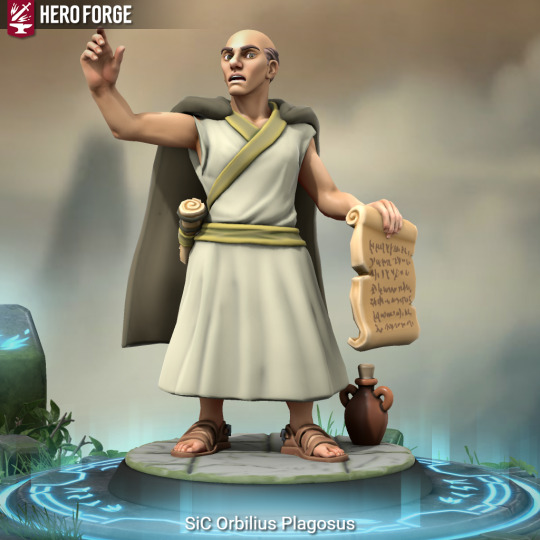

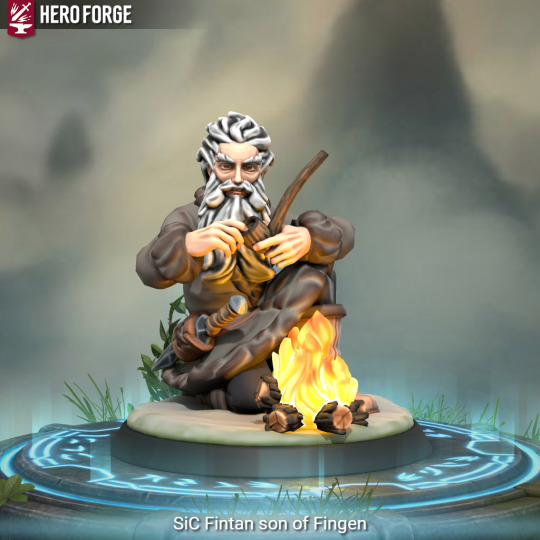

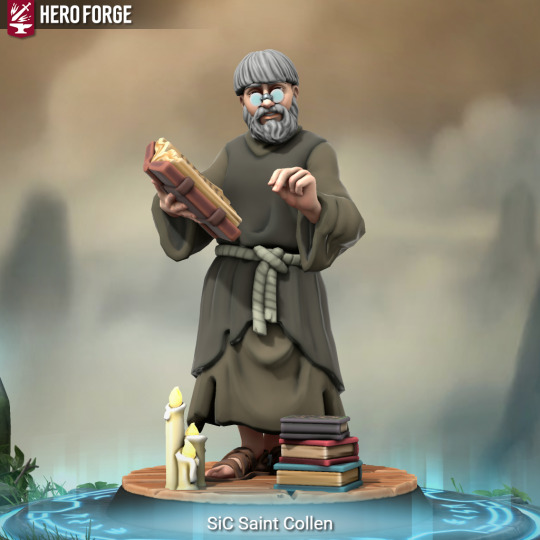
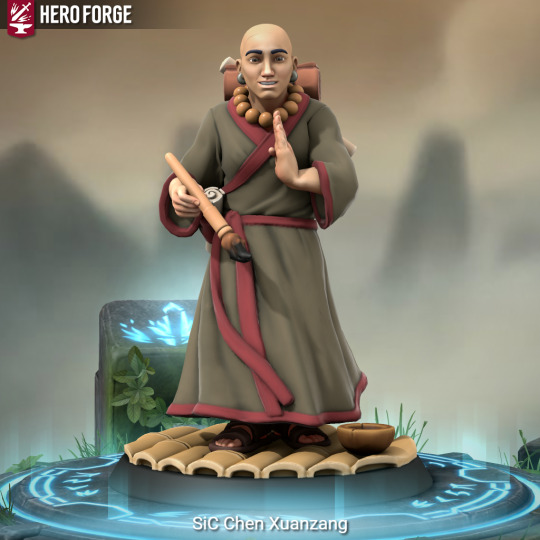

(part 1)
Characters of School in Carmarthen made in Hero Forge (custom mini maker by day, 3d dress-up game also by day).
I’d have to enroll in an ancient filid school and write a proper epic ballad to accurately describe how much I love this book and everyone in it
---
Персонажи Школы в Кармартене, сварганенные в браузерной одевалке (будем честны)) Hero Forge. У меня опять приступ кельтомании спасите
2 notes
·
View notes
Text
sindarin dictionary + finnish names + german, french and irish forenames
Abern Adnenha Adubles Aethoro Afteril Agmarvo Aguliamher Aidias Aighto Aimpteervo Alabhín Alaith Almur Alored Amerbell Amhán Amneg Anilo Annedh Annen Annictir Aoive Apebdurn Aranni Aricere Arnen Arpane Asnen Atalip Athrikkank Atinas Autabley Bapell Barlotini Beadhun Belen Belverock Biljal Bothina Brannaegir Breen Breteppl Brighon Brinestid Briska Britholer Britter Briukkon Bronenán Buill Caitaave Caitundeth Calaudded Calful Caloros Carearing Carlde Cathirk Ceraw Chlagán Cincen Clewedaing Cload Cloraud Cloromaos Clows Colair Colden Coless Colgaed Collf Comaulmuil Coustín Cúmháing Danou Darmfhín Dasce Deace Deako Deitold Dianiite Dothor Dubhón Dublen Duild Duilte Duithew Dwiderill Dylimile Déris Dírie Dírith Eabrachèle Eacha Eadhadesse Earlant Eaticuir Eceir Ecoinne Edesg Eineg Ellmuia Elruir Eltorfhil Eluad Elvion Emirint Enorlani Erghelmin Erkkoin Erwarnann Eseld Exilf Faleanta Falichán Fanenorn Fanng Fanten Feamp Feannu Featra Femegorann Fethand Fialmheas Fianeind Filider Filíostola Finfulis Fisse Fiver Flonna Flooma Foliad Folose Formla Foron Fralackla Framhín Frartti Friinen Frivenc Frodur Galiass Galie Garkke Garver Gislino Glehteard Gliann Golla Golowy Goofthrás Gorbe Gorod Greach Grist Groadh Gréariso Guele Gulterbh Gwaraurpen Gwatel Hacha Hakka Haneana Harann Hartúr Heari Heartionen Hedgen Heing Helianster Helimo Heried Holfrice Hoody Hoséamäkio Hounen Iandrin Idubh Iianz Iikari Iinaighaen Iistolfla Iithy Imine Imiroing Inenlanli Inikkinen Issonig Itagnola Jaary Janen Janir Jearlila Jesti Johad Johilvigh Joscat Jourkki Juhto Jullade Junaimo Junor Jutjavamh Järvigne Järvoily Jölälä Kaaterjan Kaill Kainemelle Kaloods Kalossip Karredh Keroud Keski Ketumhn Kiniemi Kiver Kokarcur Kustaut Lacth Lahtoivil Lanna Lantala Lanth Lavaukela Lehtic Lheinen Lhoudhned Linen Liriteeck Listomi Loadhe Lompl Lonen Looskiur Loothgart Lortheeppi Loskind Lourthir Lubhch Lucaikass Lumpoui Luoth Lûthons Madaged Madelghrad Madla Madooma Magoodh Mailign Maisto Malas Mallown Manclanen Mandender Manhorher Maoid Margen Mariela Marnd Martalvi Martaurept Marth Marvaid Matin Mativi Merallasal Mikoib Milín Minath Minete Miried Murithel Myttelae Mélithinu Mírand Mírear Nadwouns Naineund Neard Nethrée Nibha Nièlefulan Nodhnartha Obhersda Ochieme Oducti Oiday Ojachui Okkin Oradhnada Oriannode Oromäke Othrich Ounír Panesmad Parach Parauly Pardhade Pastame Pauniad Peark Peectikko Pelith Pennéarkle Peson Pharaldet Phensuzan Pholose Pippelfin Plehthiela Portien Premirs Prianen Priarru Pricke Pringe Putteedle Póine Ragorgaila Ralaha Ralle Ranlang Ranne Ranno Raste Rathele Rathougann Raway Rearthrint Redin Resinen Retelm Rhaned Rharsia Rhose Riamilann Ridgent Rinio Roacie Rodarth Ronadh Rormie Rounen Rualle Runiel Ruthal Saarhie Saberth Sairist Salalke Samhg Sandeldo Sathroadh Savang Sedrianth Selesting Seppinès Seraer Shiplusiva Shith Shobia Shuien Shuinen Shuninait Sigisakil Simper Sipbual Sisyrj Sivisep Slaich Slemy Slideth Snadef Sonedrith Sonen Sonóru Spolmui Stojand Stradhal Stratte Stsannín Sudompe Suirron Suokin Surhaf Séarbeán Síthad Takeinchéo Talving Tarind Tednen Teminen Terth Thapped Thicamo Thmaithel Tianti Timotold Tinen Tolounonen Tommout Toneleál Toporo Traaja Trapeose Truddery Tunceb Tuomad Twina Unint Utill Vaang Vaavale Veikinen Velvess Viele Vionic Viverry Warth Wathe Wathelyy Weemis Wicry Wifte Winedhe Woust Wranikko Wriamored Wrinen Yalosty Yanfiev Yanpallmar Ylfiar Ylfunibhán Yvorgha Éagorth Éaory Élinger Ídíriúdán Úgath Úlineve
0 notes
Photo
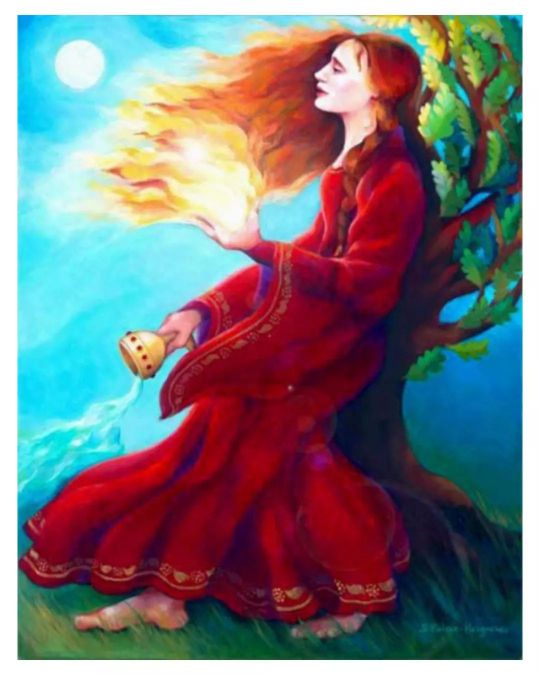
#FolkloreThursday: Brigid the Goddess Brigid, Goddess of Fire "The EXALTED One" Brigid, or the Exalted One, was the Irish goddess of spring, fertility, and life. Beloved by poets, she was the master of both healing and smithing. Her holiday, Imbolc, was held on February 1st and marked the midpoint of winter. Many of Ireland's wells and waterways were devoted to her. Brigid, or the Exalted One, was the Irish goddess of spring, fertility, and life. Beloved by poets, she was the master of both healing and smithing. Her holiday, Imbolc, was held on February 1st and marked the midpoint of winter. Many of Ireland’s wells and waterways were devoted to her. Imbolc celebrations took the form of a festival in honor of the pagan goddess Brigid, who was evoked in fertility rites and oversaw poetry, crafts and prophecy. Brigid was worshipped by the Filid, a class of poets and historians among the Celts of ancient Ireland and Britain. Brigid was considered one of the most powerful Celtic gods, the daughter of the Dagda, the oldest god in the Celtic pantheon Tuatha du Danann. She had two sisters also named Brigid (though it’s speculated that these sisters are meant to symbolize different aspects of the same goddess.) Brigid appears in the saga Cath Maige Tuired and the Lebor Gabála Érenn, a purported history of Ireland collected from various poems and texts in the 10th century. Myths about Brigid’s birth (Brigid's Cross) say she was born with a flame in her head and drank the milk of a mystical cow from the spirit world. Brigid is credited with the very first keening, a traditional wailing for the dead practiced at funerals by Irish and Scottish women. 2nd digital photo credits to © Aurélie S. #imbolcblessings #imbolc #imbolc2023 #spring #springseason #spring2023 #summer #summerseason #summer2023 #mystique #spiritique #mindfulness #spiritual #spirituality #blessedimbolc #mysticalsummers #mysticalsummer #firstdayofspring #pagan #paganism #mystical #mysticisim #mystic #folklore #folkloreflash #folkspirits #brigid #brigidsday #brigidthegoddess #imbolc2023 https://www.instagram.com/p/CoKOD3DyHFR/?igshid=NGJjMDIxMWI=
#folklorethursday#imbolcblessings#imbolc#imbolc2023#spring#springseason#spring2023#summer#summerseason#summer2023#mystique#spiritique#mindfulness#spiritual#spirituality#blessedimbolc#mysticalsummers#mysticalsummer#firstdayofspring#pagan#paganism#mystical#mysticisim#mystic#folklore#folkloreflash#folkspirits#brigid#brigidsday#brigidthegoddess
1 note
·
View note
Text
A snapshot of Festival international de littérature de Dakar 2022
A snapshot of Festival international de littérature de Dakar 2022
The first edition of Festival international de littérature de Dakar (Filid) was hosted in Dakar, Senegal from June 29-July 2, 2022. The festival theme was “Literature and conflict.”
The Festival international de littérature de Dakar (Filid) (Dakar International Literature Festival) made its debut in venues in Senegal with writers, literary critics, publishers, men and women of culture, students,…

View On WordPress
0 notes
Video
youtube
I Learned the Ancient Secret of Psychic Dreams (See the Future)
#CelticMythology #NorseMythology #Dreams #Dreaming #Premonition #Clairvoyance
#celtic mythology#norse mythology#dreaming#dream#clairvoyant#psychic#paganism#vision quest#irish paganism#welsh mythology#filid#imbas forosnai#awen#seidr#seidkonr#volur#valkyrja#fylgja
6 notes
·
View notes
Text
Druidic Magic Incantations

The Druid warns Maeve about Cuchulainn
Dichental do chennaid cnaîme: "incantation by the fingertips"
Dichetal Do Chennaibh is an altered state which is achieved by chanting or reciting a repetitive pattern, usually appealing to the gods. It is also reciting a repetitive text to create a form of egregore. He gave the Breton name kentel.
Close to the mantra: which is a sacred hymn, a mystical formula, a magic incantation, a condensed formula, formed of a single syllable or a series of syllables, repeated unceasingly with a certain rhythm, in an exercise of meditation or for religious purposes, in Hinduism, Buddhism, Sikhism and Jainism.
As an abstract conception of the aspects from which the manifestation arises, the Dichetal Do Chennaibh is inseparable from the gods with which it identifies. The power of a divine being resides in his name, in his formula, which is the means by which the worshiper can establish contact with the god and it is by means of these sounds that his presence becomes real.
Verbal formulas can be presented in the monosyllabic form or in the form of a text where all the words begin with the same accented syllable. It is essentially rhythmic and makes it possible to redouble, on the phonic level, what the god represents. It is a call to the deity invoked since his name and some of his attributes are cited in these incantations.
For examples :
- In Gallic for Bel: BELEINOS, BELENOS, BELINOS, BELOS, BELISAMAROS, BELA
"Brilliant sun, splendid and brilliant, great very clear, shine"
- In Gallic for Belisama: KANEMI, REGANI, DEONA BELLISSAMA
“I sing the royal, Flaming Goddess”
- By invoking the name of the oak, preceded by the name of the Ogham, in the different Celtic languages (Gaulish, Irish, Scottish, Welsh, Breton): DUIR DERUOS, DUIR DAIR, DUIR DARACH, DUIR DERW, DUIR DERV
-------------------------------------------------------
Imbas forosnai "very great science that illuminates"
Magical incantation, causing a form of altered state used by seers to access visions, and reserved for the filid highest in the druidic hierarchy, the Ollamh.
The clairvoyants totally isolated themselves from all sensory inputs, sounds, lights and feelings. The "file" chewed a piece of red meat which he then placed on a stone as an offering to the gods, then he made an incantation to induce dreamlike sleep. The next day, he had to repeat two incantations, he placed the palms of his hands on his cheeks and remained so until he fell asleep. The imbas forosnai sometimes takes the form of a prophecy: "Medb, queen of Connaught, is preparing to invade Ulster when she meets a woman who says her name is Fedelm and comes from Scotland, where she learned the "science of the filid". The queen, having made sure that the woman knows the science of illuminations, questions her about the outcome of her military adventure. Three times Fedelm predicted defeat, but Medb refused to believe the prophecy.
---------------------------------------------------------
Glam dicinn "extreme curse"
Satire which, by the mere fact that it is pronounced, is enough to provoke the event it announces, with all its consequences. The satire indiscriminately targets a warrior, a king, a queen or any individual who refuses to bend to the will of the caster. Fate, the natural elements
then gang up on the victim. O'Davoren's glossary says that "standing on one foot, using only one hand and covering one eye is the position to have to do the dicinn glam". If death strikes the victim, it can, if it is unjust, turn against the one who uttered it.
-------------------------------------------------------
Teinm laegda "illumination of song"
It requires putting the thumb in the mouth… Touching a man, animal, or thing about which the question was asked and then chanting an invocation
Teinm Laegda is a state achieved through relaxation and clearing of the mind in a ritual environment. This usually involved using some sort of magical tool such as a knife, sword, or staff. Sometimes the druid had to touch the subject (if alive, usually on the head) or
directly manipulate an object to find out what secret knowledge was contained within it. This information can be events in a person's past life, a detailed story of who and what happened to an item, or even how and why the subject was enchanted. A spontaneous flow of information and/or poetic verse could accompany the first
contact.
----------------------------------------------------------
Geis "must or forbidden"
Fairly common in Irish tales, they are found as tynged in Welsh myths. A geis is not necessarily negative, and has the force of law.
The druid pronounces the incantation at the birth of the future warrior or during his military apprenticeship. During his existence the king or the warrior finds himself under the obligation to infringe the prohibitions concerning him, under penalty of losing his honor, it is the announcement of his imminent death. The violation of the
prescription causes the violent death of the warrior.
Only a druid has the power to raise a geis.
These geis are very diverse; sometimes it is a warrior who receives the prohibition to tell his name to an adversary; Mael Duin cannot take three companions beyond a number determined by a druid; Noïsé was forbidden to come to Ireland in peacetime except with three men: Cúchulainn, Conall and
Fergus. Fergus had been given the law never to refuse an invitation and not to leave a feast until it was over. Cúchulainn was obliged never to pass near a hearth without stopping there and accepting food there; he was forbidden to eat dog.
Source: Dianann OBOD
#druidic#druidisme#druids#druidess#druidry#druidy#paganism#celtic paganism#incantation#magic of druids#druidic craft#druidic incantations#celtic mythology#celtic gods#magic#pagan wicca#obod
83 notes
·
View notes
Text
"It is often thought...that what the medieval Irish filid had of the practices of seership, of lore-keeping, and of supernatural contact was inherited or appropriated from what would have been 'originally' druidic custom and functions. This seems unlikely for all sorts of reasons- including that the poetic and the druidic functions were separate and distinct from an early period- but this may be the case especially in Ireland, where the evidence for the religious status of druids as anything other than diviners and practitioners of certain varieties of magic is scant, and little is known in general of their status, their functions, or their teachings."
Dr. Philip A. Bernhardt-House in The Well of Five Streams: Essays on Celtic Paganism by Erynn Rowan Laurie
11 notes
·
View notes
Note
i mean old irish law had grades of bards of which ollam was like the creme de la creme. filí s a more general term for the profession (pl. filid) so you could use that? unless you also want grades of bards :)
yes! that's part of my plan for bards, that ollam is King Bard and you don't get there until you're level 20. (and if i don't use the word ollam, that idea still applies.) still deciding if i want grades of bards / a name for the whole profession / something else lol.
8 notes
·
View notes
Text
Today’s pagan wheel of the year blog is on Imbolc/St. Brigid’s day/Candlemas/Midwinter
🌺☘️❄️☀️🥚🥛🧚🌕🕯🌺☘️❄️☀️🥚🥛🧚🌕🕯
Imbolc is a pagan holiday celebrated from February 1 through sundown February 2. Based on a Celtic tradition, Imbolc was meant to mark the halfway point between winter solstice and the spring equinox in Neolithic Ireland and Scotland. The holiday is celebrated by Wiccans and other practitioners of neopagan or pagan-influenced religions. Imbolc is just one of several pre-Christian holidays highlighting some aspect of winter and sunlight, and heralding the change of seasons.

Origins of Imbolc
The celebration of Imbolc dates back to the pre-Christian era in the British Isles.
The earliest mentions of Imbolc in Irish literature date back to the 10th century. Poetry from that time relates the holiday to ewe’s milk, with the implication of purification.
It’s been speculated that this stems from the breeding cycle of sheep and the beginning of lactation. The holiday was traditionally aligned with the first day of spring and the idea of rebirth.
Brigid the Goddess
Imbolc celebrations took the form of a festival in honor of the pagan goddess Brigid, who was evoked in fertility rites and oversaw poetry, crafts and prophecy. Brigid was worshipped by the Filid, a class of poets and historians among the Celts of ancient Ireland and Britain.
Brigid was considered one of the most powerful Celtic gods, the daughter of the Dagda, the oldest god in the Celtic pantheon Tuatha du Danann. She had two sisters also named Brigid (though it’s speculated that these sisters are meant to symbolize different aspects of the same goddess.)
Brigid appears in the saga Cath Maige Tuired and the Lebor Gabála Érenn, a purported history of Ireland collected from various poems and texts in the 10th century.
Myths about Brigid’s birth say she was born with a flame in her head and drank the milk of a mystical cow from the spirit world. Brigid is credited with the very first keening, a traditional wailing for the dead practiced at funerals by Irish and Scottish women.

Ancient Imbolc
In pre-Christian times, Imbolc observance began the night before February 1. Celebrants prepared for a visit from Brigid into their homes by crafting an effigy of the goddess from bundles of oats and rushes. The effigy was placed in a dress and put in a basket overnight.
The day of Imbolc was celebrated by burning lamps and lighting bonfires in tribute to Brigid.
Brigid Becomes St. Brigid
Over the centuries, Brigid was adopted into Christianity as St. Brigid.
One of Ireland’s three patron saints, the Catholic Church claims St. Brigid was a historical person, with accounts of her life written by monks dating back to the 8th century. Brigid (or Bridget) is the patron saint of Irish nuns, newborns, midwives, dairy maids and cattle.
Whether or not she existed, these stories contain aspects in common with the details of the pagan goddess and illustrate the transition from pagan to Christian worship.
Like the goddess Brigid, St. Brigid is associated with milk and fire. Born in Ireland around 453 A.D., St. Brigid was the daughter of a slave and a chieftain who was celebrated at an early age for her agricultural knowledge.

With no interest in marrying, Brigid’s goal was to create a monastery in Kildare, supposedly the former site of a shrine to the Celtic goddess of the same name. Brigid lived her entire life there.
She was renowned for her charity to the poor and stories abound about her healing powers. St. Brigid was a friend of St. Patrick, whose preaching set her on a course at an early age, and she became Ireland’s first nun.
St. Brigid is said to have died in 524 A.D. The remains of her skull and hand are claimed to be in the possession of churches in Portugal.
In the 12th century, legend holds that the nuns in Kildare attended to a fire built in St. Brigid’s honor. The fire had burned for 500 years and produced no ash, and only women were allowed in proximity of the fire.
The celebration of St. Brigid’s Day on February 1 was put in place by the church to replace Imbolc. On her feast day, an effigy of St. Brigid of Kildare is traditionally washed in the ocean and surrounded by candles to dry, and stalks of wheat are transformed into cross talismans known as Brigid crosses.
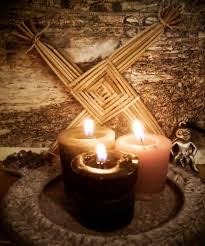
Modern Imbolc
The modern celebration of Imbolc is considered a low-key, loose and sometimes private affair concerned with reconnecting with nature.
Since it’s a climate-specific holiday, some followers of the Wicca religion adjust their celebration of it to correspond with a date more appropriate to the coming of spring where they live. Others embrace the symbolism of the holiday and keep to the February 1 celebration.
The goddess Brigid is central to the celebration for modern Wiccans. In the tradition of the original Celtic festival, Wiccan groups that worship Brigid might include fire rituals on Imbolc.
Traditions from both the pagan celebration of Imbolc and the Christian celebration of St. Brigid’s Day can be found in the modern Imbolc celebration. Celebrants sometimes make a Brigid cross out of reeds as well as a Brigid corn doll or effigy.
Candlemas
Candlemas is a Christian holiday celebrated on February 2 that has aspects in common with Imbolc. Its celebration can be traced to 4th century Greece as a purification holiday and a celebration of the return of light.
Candles have traditionally been used in its observance. It’s possible that Candlemas is a Christian adaptation of the Roman holiday Februalia.
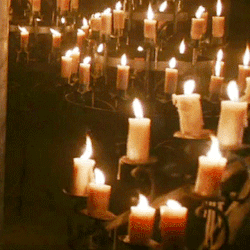
Groundhog Day
February 2 is also celebrated as Groundhog Day, which began in the United States in 1887. The idea is that a groundhog exiting its burrow can predict whether winter will stay or go based on whether the groundhog sees its shadow. The day was a stunt by a newspaper in Punxsutawney, Pennsylvania, that has endured.

Concocted in Pennsylvania Dutch country, Groundhog Day is believed to be an adaptation of a German Candlemas tradition involving a badger. There have been attempts to portray Groundhog Day as a modern offshoot of Imbolc, but the two days are not likely directly related.
I hope you enjoyed this blog more to follow soon!
Blessed be,
Culture Calypso’s Blog 🕯🧚❄️🌙🌺☀️🥚🥛
#my blogs#spirituality#history#paganism#holydays#pagan holidays#midwinter#brigid#stbrigid#celtic lore#irish mythology#rituals#Spotify
7 notes
·
View notes
Text
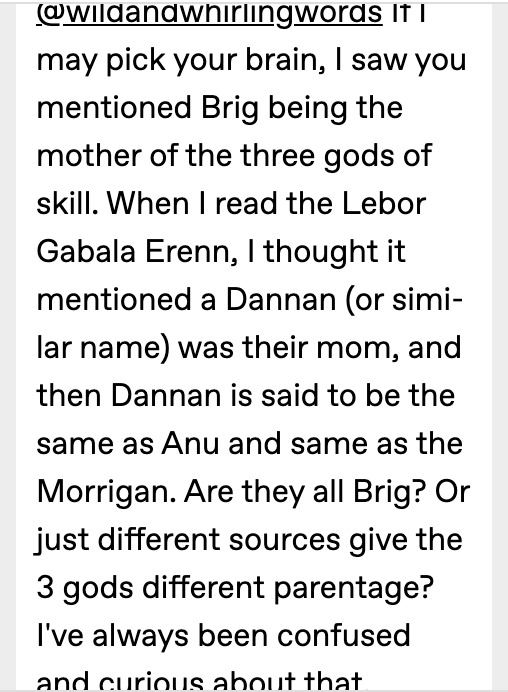
@inkandglitter21
This is a VERY good question! And one that I think keeps quite a few people in the field up at night, to be honest, but I’m going to give the best answer I possibly can, hence why I’m giving it its own post. My apologies in advance if this gets slightly technical - Some of this is kind of inherently technical and complicated. I also am going to HAVE to mention that I’m doing my best to represent the closest thing we can get to a consensus of the field, but that doesn’t mean that someone, in a week or so, can’t publish an article that blows this out of the water. It happens.
As a further warning, which I give every single time I discuss the issues inherent to the study of this material: I am not a religious authority. I’m a Celticist. I love the Tuatha Dé, but I can’t claim any form of spiritual connection with them. (As LGE would say, “Though the author enumerates them, she does not worship them.”) So, to anyone who reads this who might have a connection to the figures described....I can’t say anything about the relationship that you, personally, have with them. I can only say what we know, what we don’t know, and what we’re still kind of scratching our heads at with regards to the medieval material. Part of why I’ve, traditionally, sworn off talking about Bríg, Danu, and Morrigan is specifically because they tend to arouse some very strong feelings, and I never really wanted to get caught in something I couldn’t handle.
But, also. What use is a geas if you don’t break it, likely leading you to your tragic-yet-inevitable doom?
So, first off, let’s talk Lebor Gabála Érenn. MAGNIFICENT text, and a personal baby of mine. Chock full of information about the Tuatha Dé, the Fir Bolg, the Milesians, the High Kings of Ireland....basically everything a person could ever want to know. A mythographer’s dream and nightmare all in one. But, there’s a problem with it, and it’s one that I feel like Celticists have never stressed enough to the public, not the least because Celticists, as a group, tend to be a little....terrified of LGE. There are relatively few scholars who want to work with it after Macalister’s edition (to understand the reception to Macalister: A personal hobby of mine is collecting remarks other scholars have made about his edition, because they can be BRUTAL.) It has been described as “almost unreadable.” Which is kind of forgivable given the man was DYING when he made it, but still.
Why are so many scholars scared of LGE? Well, primarily, because it’s hard to say that there was one singular LGE. LGE, as we know it, was compiled in about the 11th century. Or, it began to be compiled in the 11th century. It’s a Middle Irish text (so, it’s coming significantly later than, say, Tochmarc Étaíne or Cath Maige Tuired, which are both ~9th century texts, though CMT was given revisions in the 11th century to bring it in line with LGE). And it is based off of a MUCH bigger genre of pseudohistorical texts, with many of the older texts being missing or destroyed. (The one generally most mourned by us is the one in Cín Dromma Snechta, which could have dated to as early as the 8th century and definitely contained a sort of proto-LGE. We know this because LGE cites it on occasion, so the tradition didn’t fully die out, we just don’t have the full thing.) So, to begin with, LGE is a mixed bag, based off of essentially all the work that came before it, with the scribes involved basically playing a juggling game with what prior scribes jotted down. (You can see it every once in a while, where a redactor will say something like “Certain ignorant people believe ____, but it is clearly not the case, for _________.”)
It’s almost better to view it as a scrapbook than a single text - You have about 3-4 recensions (different scholars identified different recensions) spread out over around 20 surviving manuscripts, each recension containing significant amounts of detail that vary from their counterparts. Also, studded across LGE, you have a variety of poems that are believed to date either before or at around the same time that LGE was being compiled. (Part of what drives scholars up a WALL with Macalister’s translation is that, besides not identifying the original poets for the poems featured in LGE, he also separated the poems from the text around them. And, as someone who did have to work with that translation....yeah, it is a hot mess. Sorry and RIP, Macalister, but it’s a mess.)
Now, you might wonder: Why am I telling you this? You came at me with a mythography question and I’m hitting you with manuscript studies. But THIS is the context that it’s existing in - I know it’s fairly popular to kind of talk shit about the scribes writing this stuff down, but it’s very important to understand that they were really trying their best to understand this stuff, just like we were. And, between the various recensions of LGE, we can actually SEE the tradition evolve. One of the key ways to know that Something Pre-Christian is going on is if NONE of the redactors could agree on someone. If you see someone’s depiction REALLY shifting around, you know that the redactors were having an issue with them, possibly dealing with multiple contradictory traditions.
Enter the Bríg/Dana/Anu/Morrigan problem. AKA “Things that will cause me to have nightmares.” So, let’s try to take this piece by piece.
The term “Tuatha Dé Danann” is generally accepted to be a later addition. There was not, before a certain time in the Irish mythological tradition, any notion of a goddess named “Danu”. (Established by John Carey in the article, “The name Tuatha Dé Danann”-- Essentially, the term “Tuatha Dé” was the original, but then, with the influence of the term Tuatha Dé, or “Tribe of God” to refer to the Israelites, they felt they had to disambiguate it to “Tuatha Dé Danann”, or “People of Skill”, and then people mistook “Danann” as being the name of a goddess...if I remember correctly, since I don’t have it to hand at the moment.) It is very important to establish this off the bat. Now, how did this get started? And where does this web begun to be woven? Well, I feel like someone could probably write at LEAST a MA dissertation on the topic, possibly even a PhD, and it definitely isn’t going to be me, but I can try my best.
So. The Trí Dé Dána (Three Gods of Skill).
Originally, it seems very likely that the genitive component Dána in their name was not meant to be a proper name. They were not MEANT to be perceived as “The Three Gods of Dana”, but “the three gods of skill”. As noted by O’Rahilly (and GOD, it hurts me when he’s right), the first time we really have the phrase referenced is in Cath Maige Tuired, where, he argues, and I have to agree with him, that it refers to Goibhniu, Luchta, and Credne, who Lugh goes to for weapons to fight against the Fomoire. Additionally, you have a gloss on the 9th century text “Immacallam in Dá Thuarad: Ecna mac na tri nDea nDána” that says that their mother was Bríg, though also seems to indicate, specifically, a connection with the filid, which keeps neatly with the LGE reference (and to the image of Bríg as a poetess. I don’t have enough time to talk Bríg here, but if you want to see what I had to say a while back, I made a post here) After the 12th century, though, when the name “Danu” became associated with the Tuatha Dé, a bunch of medieval scribes looked at “Trí Dé Dána” and thought, not UNREASONABLY, “Oh? This is a reference to Danu? Let’s fix that grammar!” So you have, in some later recensions of LGE, the name “Trí Dé Dána” replaced by “Tré dée Danann/Donand/Danand.” It is vital to mention, as Williams does in Ireland’s Immortals (189), that “Danu/Donu” is never attested, it’s always Donand/Danand. So, from the get-go, trying to identify “Danand” with “Anu” was going to be problematic at best. The general consensus seems to be that Bríg and Bres were the original parents of the Trí Dé, and that it’s very possible that they were, originally, specifically associated with the filid, or poets, with this fitting very neatly into both Bres and Bríg’s associations with the Dagda, Ogma, and, of course, Elatha, but that, with Cath Maige Tuired in the 9th century and the new tradition of Bres as a tyrant, it all got muddled, with traces of it lingering into LGE. (Myth and Mythography)
But, what about “Anu?” Who is this figure? And THIS, my friends, is where things REALLY begin to get fucky. She is identified in Cormac’s Glossary as mater deorum hibernensium, “Mother of the gods of Ireland” - That is beyond doubt. This ties in very naturally with the conflation of Danand/Danu as the mother of the Trí Dé Dána that we discussed earlier. It was, to a certain extent, natural that the two of them would become intertwined.
So, this means that Anu is a genuine pre-Christian figure who became entangled up with the whole Danu business?
Well....
Michael Clarke, in his exploration of the intellectual environment of medieval Ireland, points out that the reference to “Anu” is, in fact, VERY similar to both Isidore of Sevile and in Carolingian mythographical compilations relating to the Greek goddess Cybele, indicating that the scribe, when he was jotting that down, might have very well had that in mind (52-53). Does this mean that they invented ANOTHER goddess and then conflated that goddess with another invented goddess?
...not quite.
Because we still have to account for things like, for example, a mountain known as “The Paps of Anand”, which isn’t easily ascribed to a classical influence. (As noted by Mark Williams, with the typical mixture of good humor and good sense that characterizes his writing,“It beggars belief to think that the Pre-Christian Irish would not have associated so impressively breasted a landscape with a female deity.”) (189). Also, as noted by Williams, even the most skeptical argument cannot explain where Anu comes from. It seems unlikely that they would simply create a goddess out of thin air. Even Danu, as sketchy as her existence is, came from SOMEWHERE, even if it was a linguistic, instead of spiritual, basis. But THEN we have to deal with another question: If this figure is so important, why doesn’t she show up in any of the myths? Why let the Dagda, Lugh, the Morrigan, Midir, Óengus, Ogma, and Nuada have all the fun? The Dagda in particular is as close to a BLATANTLY pre-Christian deity as you can get on-page, so it can’t be chalked up to a simple “They didn’t want to depict the mother of the gods on page.” Mark Williams suggests, tentatively, that Anu might have been a minor Munster figure who swelled in popularity, possibly dropped in by some Munster-based scribes who wanted to bolster their own province’s reputation and, equally tentatively, without further evidence to go on, I have to agree with him. I believe there’s too much evidence to suggest that there was SOMETHING, but that there’s also too little to say that she had the range or influence described, and that it’s very likely that, at the very least, the scribe writing that entry had Cybele on his mind. It’s really, really a mystery, though.
Furthermore, as John Carey notes in “Notes on the Irish War Goddess”....why conflate Anu with the Morrigan? “While it may be plausible....to explain a war-goddess’s possession of sexual characteristics...it is considerably more difficult to follow that chain of thought in reverse in order to account for a land goddess with martial traits. Not is there any evident reason for a conflation of Anu/Anann and the Morrígan unless the former were to some extent linked with war already” pointing out that, relevant to the first paragraph of this, it SEEMS like her inclusion among the daughters of Ernmas was forced on the redactor by a prior tradition (271). Sometimes, she’s a fourth daughter of Ernmas, sometimes she’s a replacement for the Morrigan, sometimes, in the later texts, she’s associated with Danu. It’s like the various authors KNEW they had to include her in there somehow, but they didn’t know how, and she didn’t fit in smoothly once they did. Are we looking at a war/land goddess , obscure enough that the redactor didn’t know where to put her, deciding that she HAD to be the Morrigan/one of the Morrigan’s sisters but not knowing exactly how to fit her in? It wouldn’t be the first time multiple traditions clashed like this. Also, as noted by Sharon Paice Macleod, who gave a very thorough (if not always, in my opinion, sufficiently contextual) account of the tradition, there is a location called the “Paps of the Morrigan”, further suggesting a fertility aspect to the Morrigan that also features into Carey’s earlier argument of dual aspects to the Irish war goddess, along with Bhreatnach’s suggestion of the sovereignty goddess, who represents the land in the medieval Irish literary tradition (and into the present) also functioning as a goddess of death. (Indeed, as noted by Bhreatnach, the hag Cailb from Togail Bruidne Dá Derga, who functions as a sort of anti-sovereignty goddess, identifies herself with Nemain and Badb, at 255. Sovereignty giveth, sovereignty taketh away when you don’t fulfill your place as king.)
Basically, as with almost everything relating to pre-Christian religion in Ireland, we’ve really, really got to shrug our shoulders and go “Fuck if I know, mate.”
My best attempt at a tl;dr for...this:
LGE - WEIRD
Danu - Help us.
Trí Dé - Who’s your daddy? (Most likely? Bres originally, though it got out of hand after, like, the 12th century.)
Anu - Who are you? (Who, Who?)
Sources:
Scowcroft, “Leabhar Gabhála Part I: The growth of the text" (For the discussion on the different recensions of LGE.)
John Carey, “The Irish National Origin-Legend: Synthetic Pseudohistory”
T.F O’Rahilly, Early Irish History and Mythology
Máire Bhreathnach, “The Sovereignty Goddess as Goddess of Death”
John Carey, “The name Tuatha Dé Danann”
Mark Williams, Ireland’s Immortals (Who, really, puts this all together in a so much more cohesive way in his book, I highly recommend it to anyone who wants to get an idea of how these things develop.)
John Carey, “Myth and Mythography in Cath Maige Tuired.”
Michael Clarke, “Linguistic Education and Literary Creativity in Medieval Ireland”.
John Carey, “Notes on the Irish War Goddess”
Sharon Paice Macleod, “Mater Deorum Hibernensium: Identity and Cross-Correlation in Early Irish Mythology.”
40 notes
·
View notes
Photo
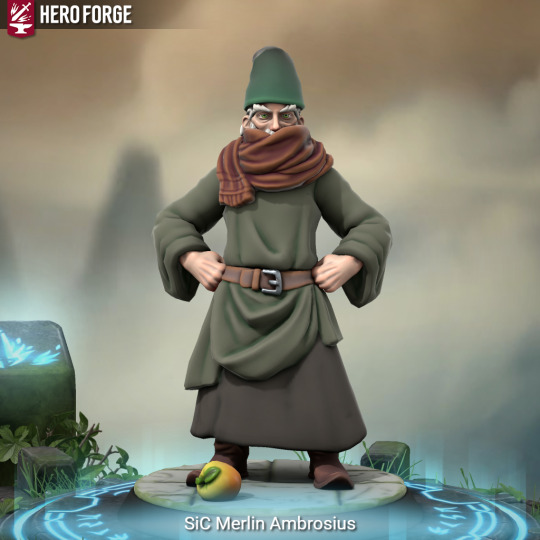



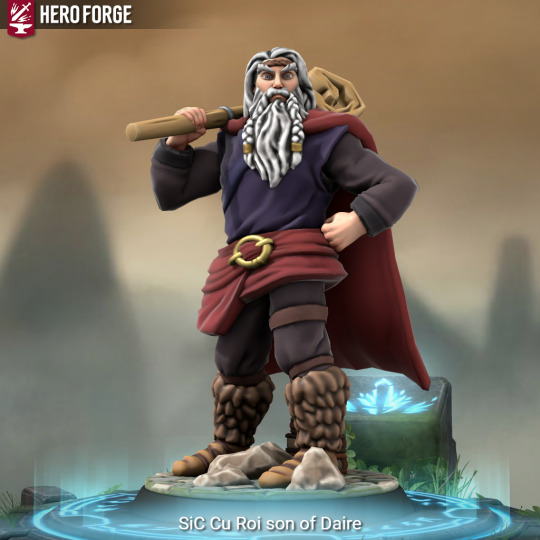

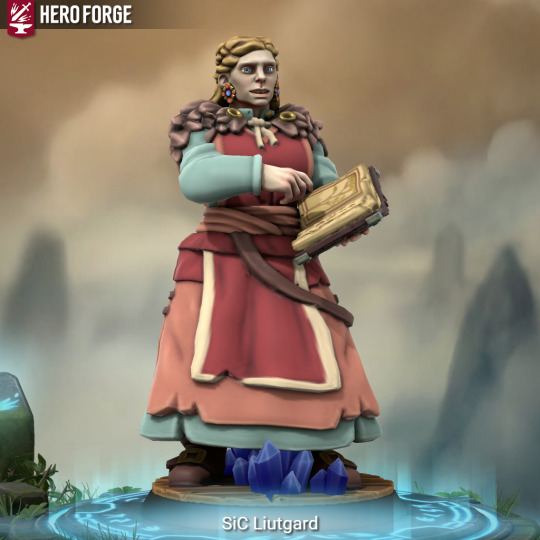
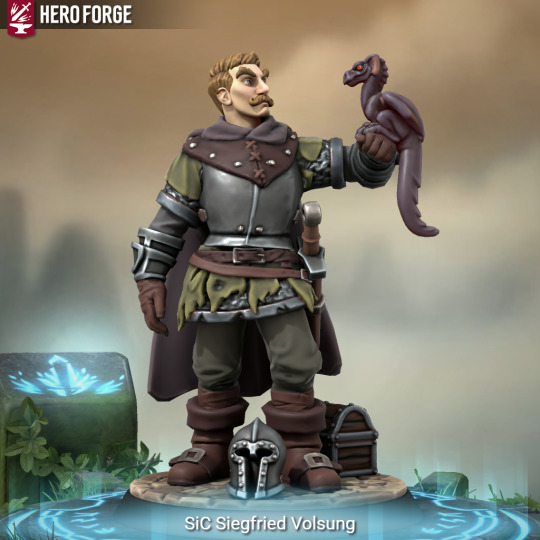
(part 2)
Characters of School in Carmarthen made in Hero Forge (custom mini maker by day, 3d dress-up game also by day).
I’d have to enroll in an ancient filid school and write a proper epic ballad to accurately describe how much I love this book and everyone in it
---
Персонажи Школы в Кармартене, сварганенные в браузерной одевалке (будем честны)) Hero Forge. У меня опять приступ кельтомании спасите
2 notes
·
View notes